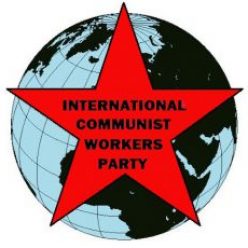We Must Mobilize Directly for a Communist World
Capitalism’s crises are deepening. Many are seeking alternatives. Ruling-class elements, fearing the alienated masses, are promoting “democratic socialism” (or Social Democracy).
Not for the first time! We must learn important lessons from our history. One is Social Democracy’s betrayal of the international working class. Another is the failure of the Communist International’s “United Front Against Fascism” strategy. This two-part article argues that we must rely on the working class to fight for a communist society: “From each according to ability and commitment, to each according to need.”
Europe, 1912: War in the Balkans was about to explode into world war. The division of the world among the imperialist powers made that inevitable. The Second International was a coalition of social-democratic parties from nations on five continents. How would it respond? There had been Second International conventions at Stuttgart and Copenhagen in 1907 and 1910. They had agreed (after heated debate) that war was caused by capitalist competition. It was bolstered by “national prejudices systematically cultivated in the interests of the ruling classes.” Workers should do everything possible to prevent the outbreak of war. If this failed, they should try to end it quickly. They should use the crises created by war “to hasten the breakdown of the predominance of the capitalist class.” The International took a sharper position in the Basel Manifesto of 1912. “Capitalist imperialism” was causing the conflicts breaking out everywhere. War “cannot be justified on the slightest pretext of being in the least in the interests of the people.”
Workers must “consider it a crime to shoot each other down in the interest and for the profit of capitalism.” The ruling classes were afraid of workers’ revolution. And they should be.
World War I broke out in 1914. Most of these socialist parties treacherously abandoned proletarian internationalism. They rushed to “defend the fatherland.” They lied that socialists “had not decided” the question of war. World socialism split in two at the 1915 Zimmerwald Conference.
On one side: Socialists whose parliamentary parties voted for war credits “for the purpose of plunder, carving up the world, acquiring markets, and enslaving nations.” (Lenin)
On the other side: Russian Bolsheviks and others — like Liebknecht and Luxemburg in Germany — who upheld the call for revolutionary civil war. This “Zimmerwald Left” would become, in 1919, the core of the Third (Communist) International. Just two years later they led masses to take power in Russia.
This split between social democrats and communists exactly paralleled the long-simmering split between opportunism (trade-union reformism) and revolutionary politics. In both cases, social-democracy exposed itself as the junior partner of capitalism.
Social-democrats were happy to put forward radical-sounding slogans that helped the rulers distract the masses from revolution. And when the rulers needed to mobilize the masses for world war, the social-democrats openly substituted patriotism for class struggle.
Remember this as the reformist program of the new US social-democratic superstar Alexandria Ocasio-Cortez says: “We [the USA] can become stronger by …saving our armed forces only for when they’re truly needed.”
The defeat of the German empire in 1919 opened the door to revolution. The German Naval Command ordered a desperate final battle with the British Navy. German sailors led revolts in Wilhelmshaven and Kiel. Civil unrest spread and the emperor abdicated.
Leaders of the powerful Social Democratic Party of Germany (SPD) prevented the establishment of workers’ power. They opposed the creation of councils (Soviets) of workers and soldiers like the ones that the Bolsheviks had created in Russia.
Instead, they continued their tradition of class collaboration and reformism. They created a parliamentary system that included German capitalists and their army.
The new Communist Party of Germany (KPD), inspired by the Bolshevik October Revolution, led a general strike and armed uprising in January 1919. Their newspaper was Die Rote Fahne (“The Red Flag”).
Workers rose in Berlin, Hamburg, the Ruhr, Bavaria and many other parts of Germany. They were suppressed by anti-communist Freikorps (militia) thugs, in bloody street battles, on orders from the SPD leadership. Key KPD leaders were assassinated.
The KPD regrouped and grew as part of the Communist International. It became the largest communist party in Europe. In Germany, as elsewhere, the democratic socialists of the 2nd International fought bitterly against the communists of the 3rd International.
The second part of this article will discuss the deadly errors of the KPD and the Communist International. They retreated from revolution, opting instead for electoral and trade-union politics. They too sought coalitions with “lesser-evil” capitalist-imperialists in a “united front against fascism.”
We have learned from their mistakes to mobilize masses for communism, now and always.

